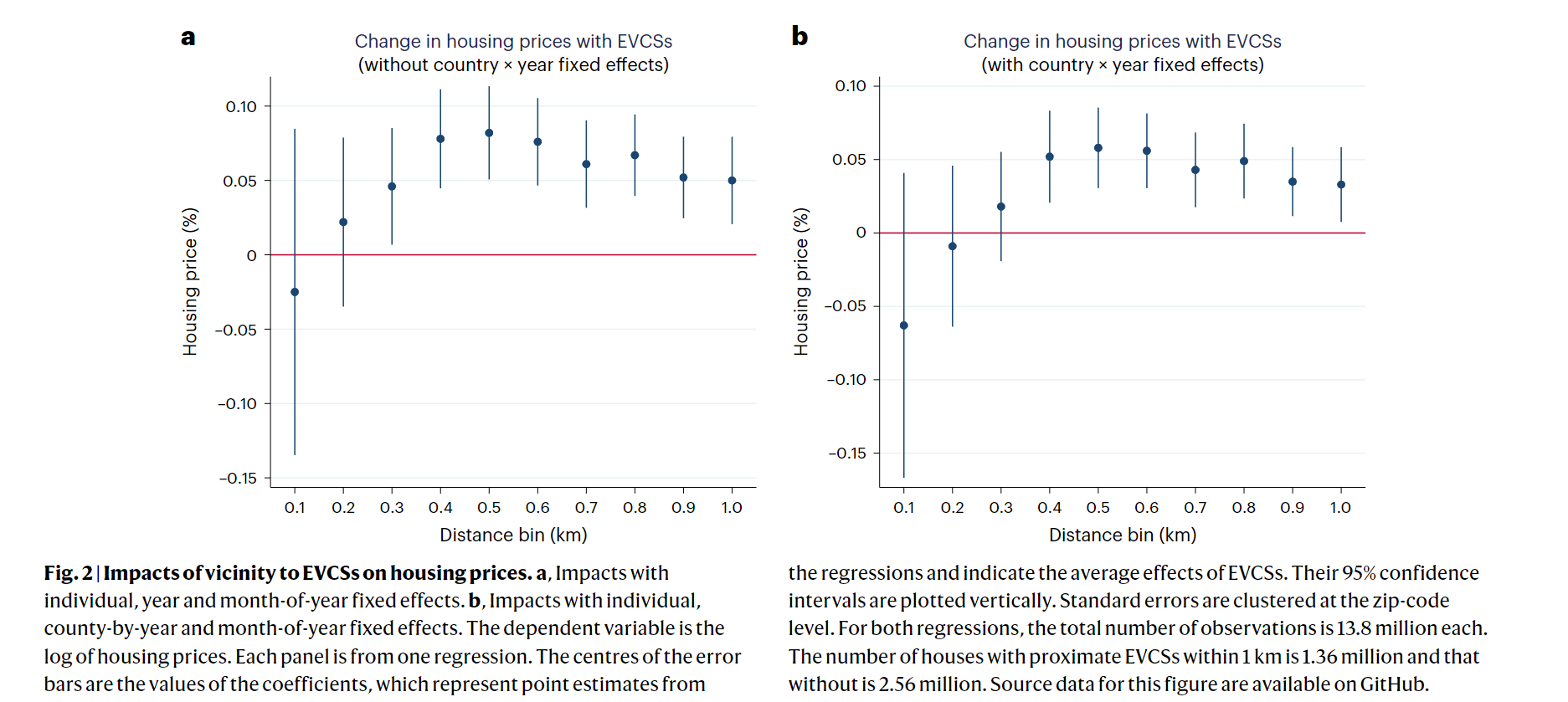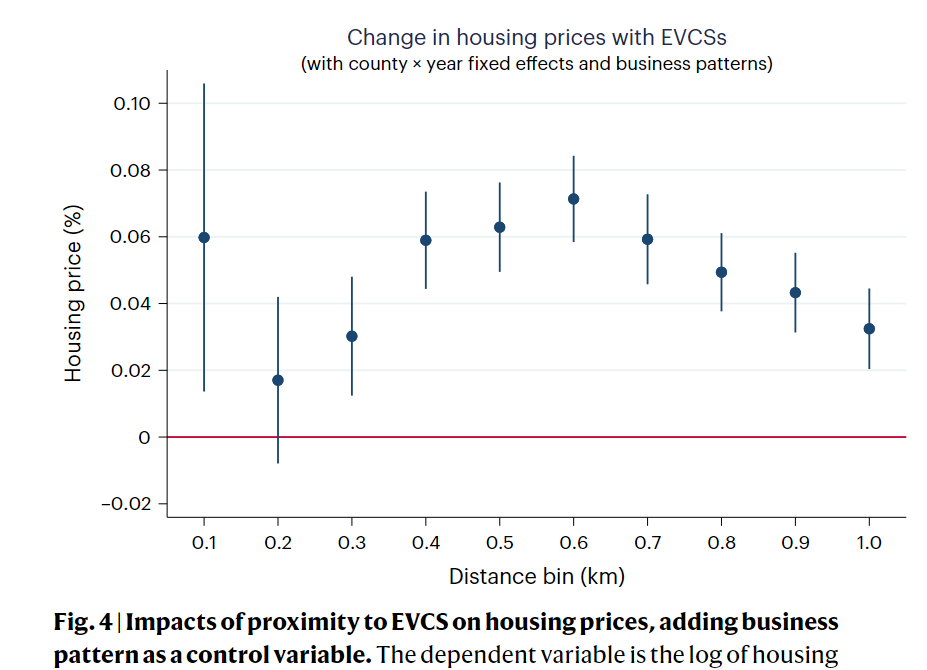Objective:
- Apply a reduced-form hedonic property value approach where access nearby EV charging infrastructure is capitalized into property values
Case:
Methodology:
- Two-way fixed effects model (generalized DID)
- Control group: house without proximate EV charging stations (EVCs)
- Test: Parallel trend
- Endogeneity: IV
- Semiparametric approach
Data Source: partial open
- EVCS: US department of Energy’s Alternative Fuels Data Center
- Housing transaction: Zillow
- Population density and income: Bureau of Economic analysis
- EV sales share: California Energy Commission
- Electricity price: EIA
- Environmental awareness: Yale Program on Climate Change Communication
- Traffic flow and PM2.5: monitoring sites in the California highway system
- Establishments: US census bereau
Findings:
- EVCs increased house prices and the magnitudes of the price premium vary across different distance bins
- The largest price premium is 5.8% for houses located about 0.4-0.5 km from charging stations

- Higher-income residents are significantly more likely to pay a higher premium for houses near public EVCSs, other positive factors including lower market shares, higher environmental awareness

- Installation of charging stations increases the annual traffic by 0.3% and increases the peak month traffic by 0.5%
- PM2.5 decrease by 1.3-2.2%

- People in multifamily houses do have a higehr willingness to pay for EVCSs
- Houses located fewer than 300 m away from highway chargers experience negative impacts
- Exclusive EVCSs have a lower housing premium at 1.0-3.6%
Coding Reference:



